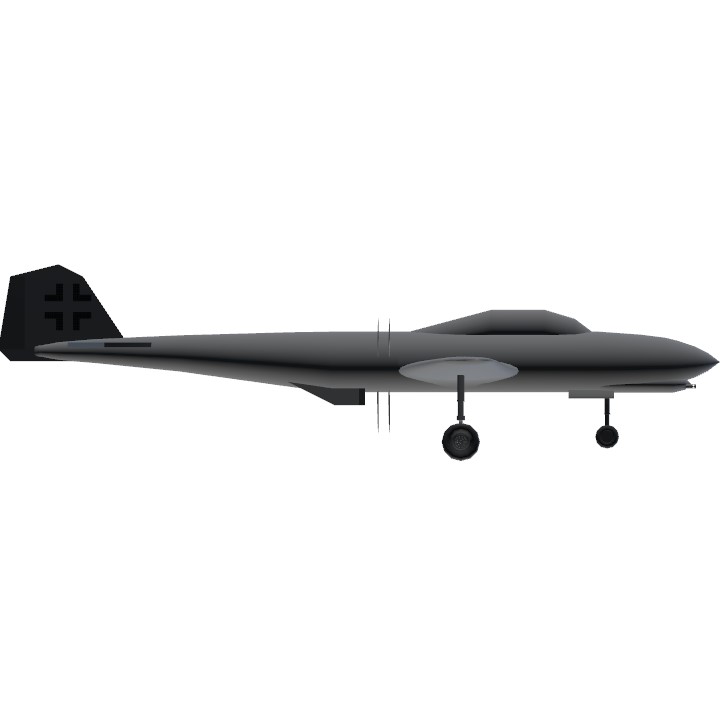He-109 V2 R&D Report
Role: experimental center propeller interceptor
The He-109 V1 is well a very interesting aircraft as its airframe was inspired by the Ju-210 and Ju-209 series. From the original blueprint it was meant to have the propeller in between the wings, which was quickly thrown out due to obvious reasons. The reasons being was if the plane was to belly land the propeller will bend and rip the wings apart. The second major issue was where to put the engine at as they had 3 options. Put it in the back of the propellers or in front where the pilot was located. The designers feared that if it was to be put behind the pilot it would cause an annoyance humming noise due to the proximity. A fully built He-109 V1 was tested and fly by Felix von Semler one of the ace pilots of the Ju-209A1 to defend the homeland. He called the He-109 V1 the following:
“Das Motorengeräusch war überhaupt nicht störend. Ich konnte es kaum hören, selbst als ich auf Notstromversorgung während des Krieges umschaltete, es gab kein Brummen, was selbst mich überraschte”
translation is:
“The engine noise wasn't bothersome at all. I could barely hear it even when I switched to wartime backup power, there was no hum, which surprised even me”
“Kolibri” was the official name for the He-109. The He-109 V2 which was flown by Felix had an excellent top and maneuverability, The He-109 had actually accidentally accomplished a world record of a top speed of 440MPH. But now to the issues due how the propellers was place and how big it was needed to be there was a very small chance of the blades coming in contact to the runway bending the propeller very slightly but enough for being it replaced. This was false however as the cases of this happening the wheels had a surprisingly super low pressure, this however was quickly fixed and the problem has never accrued again. The engine had another problem it was very heavy and it was not wanted. A better and lighter engine was used as this engine was found to be mounted on the Ju-209 but this caused the aircraft to suffer significant losses in its top speed downing it too 370MPH almost 100MPH loss in speed. But oddly enough the maneuverability wasn’t loss but was increased.
The main purpose of the He-109 was to get off the ground fast and to intercept heavy bombers with its 4x20mm to shoot them down. 30mm were indeed heavily thought to be mounted but was never done so.
End of report
Specifications
Spotlights
- SPairforce 9 months ago
- Trainz448 6 months ago
General Characteristics
- Predecessor He-109 V1
- Created On iOS
- Wingspan 46.7ft (14.2m)
- Length 48.7ft (14.8m)
- Height 12.7ft (3.9m)
- Empty Weight 5,185lbs (2,351kg)
- Loaded Weight 5,849lbs (2,653kg)
Performance
- Horse Power/Weight Ratio 0.201
- Wing Loading 27.3lbs/ft2 (133.5kg/m2)
- Wing Area 213.9ft2 (19.9m2)
- Drag Points 1352
Parts
- Number of Parts 62
- Control Surfaces 5
- Performance Cost 298





HOW IS THIS 62 PARTS?